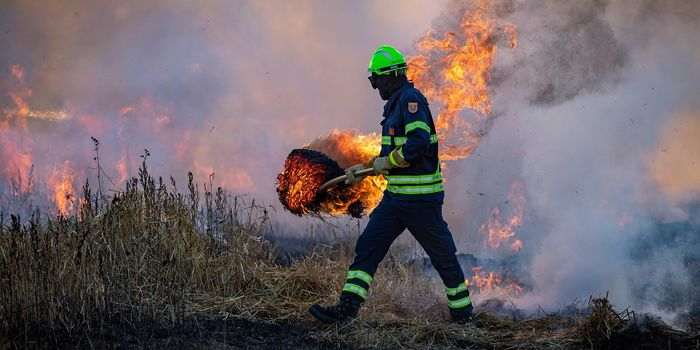April 5, 1933: The First Successful Lung Removal for Cancer
The lungs are a pair of organs in the chest integral for transporting oxygen throughout the body (via inhalation) and removing carbon dioxide from the blood (via exhalation). In some cases of severe injury, trauma, or disease, including advanced lung cancer, a patient may undergo a pneumonectomy, the surgical removal of one lung. In other cases, a partial pneumonectomy, or pulmonary lobectomy, removes one or more lobes of a lung but not the entire organ. While surgery is rarely an option for small cell lung cancer, doctors may treat some cases of non-small cell lung cancers with surgical procedures.
Evarts A. Graham completed the first successful pneumonectomy for lung cancer on April 5, 1933, at Barnes Hospital at Washington University in St. Louis, Missouri. This case made history for several reasons. Not only was it a first, and a success, but it was also unplanned!
The patient, Dr. James Gilmore (age 48), lived in Pittsburgh, Pennsylvania, where he practiced obstetrics-gynecology. Gilmore, believing he had a lung abscess, sought out Graham. Upon consultation with Graham, Gilmore learned he actually had a pea-sized carcinoma on the upper lobe of his left lung. Graham recommended a lobectomy, but Gilmore did not immediately agree. Instead, he took some time to consider his options. Gilmore eventually decided to go ahead with the lobectomy, and traveled to St. Louis for the surgery that, unknown to him, would make history.
Gilmore’s friend and colleague, Dr. Sidney Chalfant, accompanied him and observed the operation. Graham realized the cancer was not confined to the upper lobe as anticipated. Instead, the cancer had spread from the bronchus, the airway linking the trachea and lung. Graham asked Chalfant his thoughts about removing the whole lung. As a concerned friend, Chalfant asked whether such a procedure had ever been done to which Graham answered, “No, but I’ve done it in animals, and I don’t see why it couldn’t be done in a human. I think I’ll go ahead.”
Graham accomplished the procedure by working around the helium (formerly called the hilus), an indentation in the lung where nerves, blood vessels, and lymphatics enter and exit the organ. In his 1933 Graham wrote, “A small rubber catheter was tied tightly around the hilus as close to the trachea as possible. Crushing clamps were placed on the hilus below the catheter and the lung was cut off with an electric cautery knife.” Graham finished the entire procedure in under two hours.
After a rough post-operative course, including two operations to manage an abscess, Gilmore left the hospital 75 days after the procedure. The excised tumor measured 4 centimeters and pathology graded it as stage II. Gilmore returned to Pittsburgh and continued practicing medicine for another 24 years.
Graham, a pack-a-day smoker, quit smoking in 1951 when links between lung cancer and cigarettes became apparent (partially through his own research). He retired in 1956 but continued researching the time variability between smoking exposure and cancer development. Graham speculated that smokers could develop lung cancer years after quitting, even commenting, “I wouldn’t be surprised if I died of lung cancer.” Graham died the following year at age 73, shortly after receiving a bilateral lung cancer diagnosis.
One of Graham’s last visitors was none other than his former patient, Dr. James Gilmore, now a 24-year lung cancer survivor. Two doctors in their 70s who both spent much of their lives smoking and two lung cancer diagnoses with very different outcomes- what a conversation they must have had!
Unlike his surgeon, Gilmore continued smoking after surviving lung cancer. Gilmore died March 6, 1963, one month short of thirty years post-operation. Despite his smoking habit, Gilmore’s remaining lung showed no signs of recurrent cancer at his death.
Modern advances in medicine and technology have vastly improved the safety and efficacy of lung removal surgery. We can thank Graham, and also Gilmore, for this groundbreaking procedure that saves the lives of lung cancer patients every day.
Sources: JAMA (Graham), J Thorac Cardiovasc Surg, J Clin Oncol, JAMA (Baue), NLM, Indian J Surg, Time









